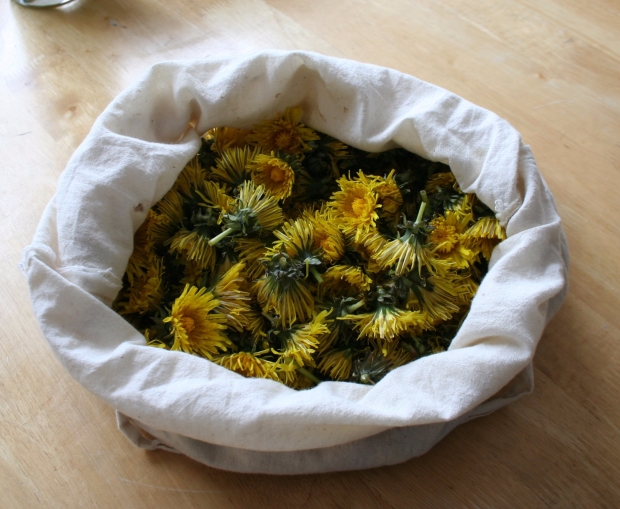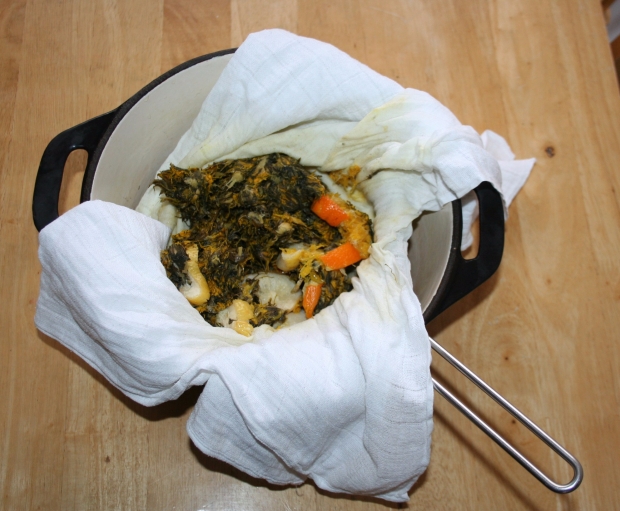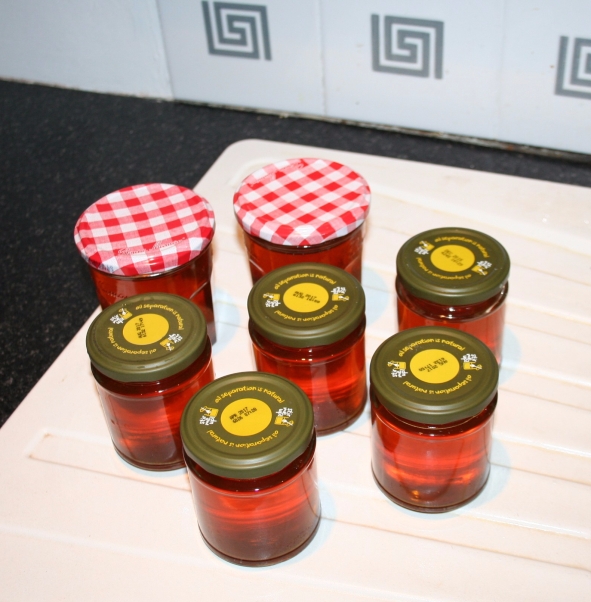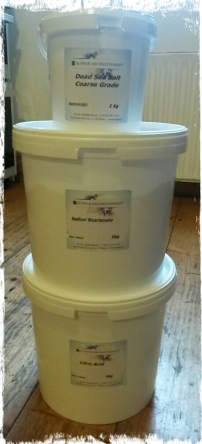It’s something I kept hearing about when I was a child but we never actually made it at home. Probably because we lived four doors up from a beekeeper who always supplied us with amazing local honey. I am talking about ‘dandelion honey’, another Spring treat that’s quite satisfying to make!
It’s a very simple, 4-ingredient recipe – water, lemons or oranges, sugar and dandelion flowers.
Recipe
- 450 dandelion flowers
- 1.5kg sugar (white or brown)
- 1 lemon
- 1 orange
- 1.5 l water
Step 1 – Collecting
Since it’s best to collect the flowers and steep them without washing (the pollen strengthens the flavour), I picked them early in the morning after a night of rain and before the doggies could get to them. I guess since the extract is boiled afterwards, it’s pretty safe to use them without washing. A little piece of advice: the collected dandelion heads will stain your hands and your bag so use one that can get dirty and perhaps a pair of gloves.

There were enough dandelions for me and the bees…

It was about half a bag of dandelion heads…
Step 2 – Steeping
Cover the dandelions and sliced lemons/oranges with 1.5l of cold water. Bring to the boil, simmer shortly, turn off the heat and leave to macerate for 24 hours.

A pretty mix

After 24 hours…
Step 3 – Cooking
Strain the mixture through a very fine sieve/muslin cloth/nut milk bag/tea towel or whatever you can find and squeeze out all the liquid.

Squeeeeeze!
Add 1.5kg of sugar and bring to the boil. Simmer uncovered on low heat for about 1.5 hours or more, if you think it’s too watery but the mixture will thicken when cooling so don’t be too stressed!

Add sugar and simmer.
Step 4 – Preserving
Prepare the jars by washing in hot water and sterilising them. (Put them in a cold oven and set the temperature to 100C/212 F, when the temperature is reached, leave them in for 15 minutes, then turn off the oven but keep the jars warm until you need them.)

Ready to be sterilised.
The above recipe makes about 1.5l of syrup (5 smaller jars and 2 Bonne Maman jam jars :)).
Pour the syrup into warm jars, close tightly, turn upside down, cover with a blanket or towel and leave to cool. Done!

The colour!
The consistency and colour of the finished product are very much like that of proper honey and even the taste and smell are very similar.
This honey contains significant goodies – trace elements and vitamins such as calcium, magnesium, iron, sodium, phosphorus, silicon, vitamins A, B and C and the antioxidant lutein. Who knew…
Another good thing about this homemade sweetener is that the only waste I created was the paper bag from sugar.
As a bonus, even though I am not an expert, it looks like a valid vegan honey replacement if you happen to be looking for one.
I cannot wait for our Sunday pancakes and putting it to the test in some oaty flapjacks! What would you use it for?













